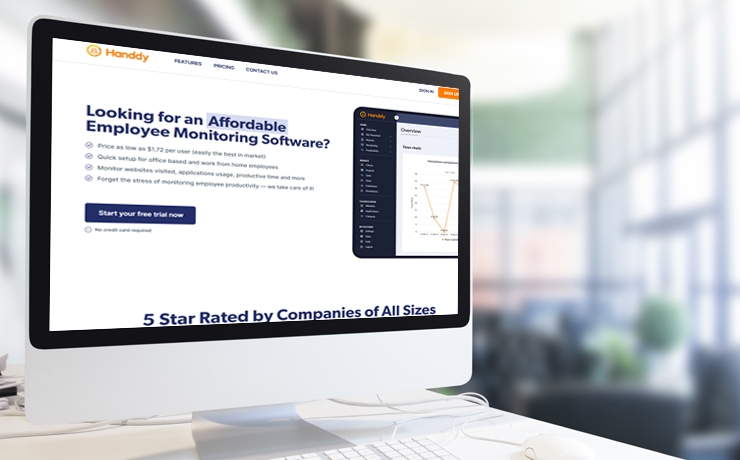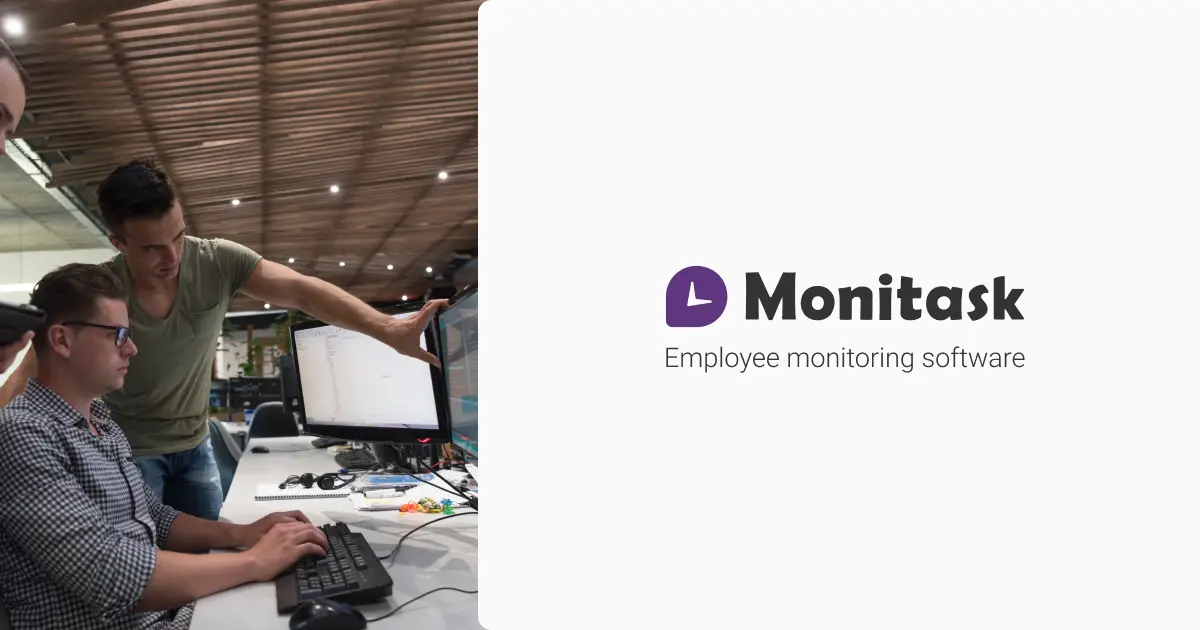It's a kind of software that enables organizations to track, monitor and document the actions of their employees. Employers can gather data about employees' behavior, such as keyboard strokes, internet use as well as screenshots of applications, and many more. The software for monitoring employees has the primary goal of increasing employee productivity, make sure that company policies are followed and protect confidential information and resolve any security concerns. Several factors should be considered when choosing an employee monitoring software. Here are some key points to remember: Features- Determine the specific features you require based on your organization's requirements. These include monitoring email activities, blocking websites and keystroke recordings monitoring application usage and monitoring email. Prioritize features that align with your monitoring goals.
Compliance and Privacy - Be sure that the software complies to ethical and legal standards in relation to monitoring of employees. Learn about the applicable laws and regulations in your local area. Think about software that is clear and customizable options to protect employee privacy.
User-Friendliness: Think about the software's usability and accessibility. A user interface that is easy to use and a easy installation will save you time and simplify your implementation. It is recommended to look for dashboards that can be customized and reporting tools that permit you to easily analyze the data you have taken.
Integrity and Compatibility- Ensure that the software integrates smoothly with your current IT infrastructure as well as the other software you are using, such as operating systems and email clients, as well as tools for managing projects, and collaboration platforms. Compatibility is key to ensuring seamless monitoring, without disrupting your day-today activities.
Data Security: Review the security measures of the software to ensure safeguarding the collected information. Access controls as well as encryption and secure storage of data, and compliance to industry standard security protocols are vital. Ensure that the software vendor has robust security practices and a good track record in data protection.
Scalability: The software must be able to scale up or down according to the size of your business. Select a program that can easily increase its capacity to meet the demands of your business when you plan on expanding your workforce or opening new locations.
Analytics and Reporting- Evaluate the reporting capabilities of the software. Look for features that provide extensive insights into the productivity of employees, their timing allocation, and trends. Customized reports and analysis will help you to make informed decisions and determine areas of improvement.
Customer Support- Examine the quality of support provided by the software vendor. Examine their responsiveness, availability and the quality of technical support. Customer support that is prompt and responsive will give you assistance when problems occur.
Cost - Consider the pricing model of the program. Knowing the pricing structure as well as the additional costs, such as support, updates or extra features is essential. Plan your purchase according to the features and value offered.
Transparency and employee communication Transparency and Communication with Employees - Inform your employees about the use of software for monitoring. Be clear about the goal the work scope, and expectations with respect to the monitoring. Discuss any concerns they may have and assure them of confidentiality of their information.
By evaluating these factors you can make an educated decision that fits your organization's particular needs and protects employees' privacy while meeting all lawful standards. View the recommended time tracking monitoring service company for website info.

What Are The Functions Of Employee Monitoring Software?
The software for monitoring employees provides a variety of options to monitor and analyze the activities of employees. The software for monitoring employees may include different features. Here are a few typical features. Activity Monitoring - This feature records and logs all employee activities such as the sites visited, the programs utilized, files accessed, and the time spent. It provides a complete overview of what employees do while at work.
Keystroke Logging- Keystroke logs record every single keystroke entered by employees. It helps to spot productivity issues, detect unauthorised activity, and collect evidence, if needed.
Screenshots and Screen RecordingSome software takes screenshots of employee computer screens at regular intervals or records their screens in real-time. This can be beneficial for monitoring productivity or troubleshooting.
Internet Usage Tracking This feature allows employees to track their online activities, including the websites they browse, search results and downloads. It lets you identify other internet activities that are not related to work, security risks or policy violations.
This feature tracks all apps that employees use at work. It provides insights into which applications are most frequently used, as well as helping to identify any unapproved or excessive applications.
Email Monitoring permits employers to monitor all employee emails. This includes both sent and received emails, email attachments, as well the emails' content. It aids in ensuring the compliance of corporate policies, to prevent data leakage and to look into any suspicious activity.
Document and file tracking This feature monitors the changes to files, transfers, and changes to files. It secures sensitive information tracks document collaboration, and ensures that the document is in compliance with the data security policies.
Remote Monitoring is a feature that lets employers monitor their employees even when they work from afar or at different places. Employers can keep track of employees' performance and activities regardless of the location they're located.
Productivity Analysis- Employee monitoring software often comes with productivity analysis features which provide insight into employee work patterns along with time allocation and overall levels of productivity. These analyses identify areas for improvement and can help to optimize workflow.
Reporting and Analyses - Robust analytics and reporting features provide detailed reports and graphs based upon the collected data. These reports provide valuable insight into employee performance in resource allocation, as well as time management.
Software that offers features to ensure compliance and management of policies can ensure that a company's rules and regulations are adhered to. They allow employers to define and enforce rules pertaining to acceptable use of computers, internet access, and data security.
Alerts and Notifications - Alerts and notifications alert employers and managers about certain events and activities. They can alert to excessive use of the internet or attempts to access restricted sites, or unusual behavior.
It is crucial to know that these features may differ dependent on the software you select. When you choose a program, be certain that the features you choose are in line with your monitoring goals as well as complying with any ethical or legal requirements applicable to your particular jurisdiction. Check out the top rated employee monitoring services for blog advice.

How Can Employee Surveillance Software Adhere To Compliance And Privacy Law?
Compliance and privacy laws are essential to employees monitoring software. Monitoring software for employees must adhere to specific regulations regarding privacy and compliance. Although these laws may differ in accordance with the country of origin, some of them are standard. Monitoring tools for employees typically include features which allow employers to inform their employees in a clear manner. This could involve giving written notices, getting the consent of consent forms, or preparing an employee handbook that outlines monitoring procedures.
Transparent Monitoring Policies - Transparent monitoring policy promote transparency by educating employees of the types of data being collected, the reason it's being monitored, and how extensive the monitoring is. Clear, comprehensive policies will allow employees to better understand their rights in terms of privacy as well as the limitations of monitoring.
Data Minimization- To comply with privacy regulations, employee monitoring software often uses data minimization techniques. This means that only the necessary data is collected and retained, and irrelevant or excessive data is discarded. By limiting data collection to only the necessary to be monitored This software minimizes the risk of privacy and increases compliance.
Anonymization and Aggregation Various employee monitor software anonymizes or aggregates data for further protection of employee privacy. Anonymization erases personally identifiable information (PII) from collected data and makes it difficult to link data with specific individuals. Data from multiple employees are combined to provide insights on a group-level without identifying any individual.
Secure Data Store and Encryption: Employee monitoring software ensures that the security of data collected first. Secure encryption and storage of data is used to safeguard information from unauthorized access or disclosure by accident. Secure data is important in transit, as well at rest.
Access Controls and Restricted permissions - Employee monitoring software provides access control with greater granularity to ensure compliance. This permits employers to restrict access to monitoring information only to those who are authorized to use the data for legitimate purposes, such as HR personnel or designated administrators.
Employee Rights & Remedies Respecting the rights of employees is crucial for ensuring that they are in compliance with privacy and compliance laws. Many employee monitoring programs include options that let employees view their own data and make corrections, or even make complaints. This permits employees to act and exercise their rights should they feel their privacy has been infringed.
Conformity to Data Protection Regulations – Software to monitor employee performance is designed to comply with any applicable regulations. For instance the General Data Protection Regulations of the European Union and the California Consumer Privacy Acts of the United States. The term "compliance" refers to the implementation of security measures to protect data that respect the rights of the data subjects and ensuring that data processing is legal.
Alongside employing employee monitoring tools companies should also consult legal experts and keep up-to-date regarding the latest laws and regulations in their jurisdiction. A comprehensive strategy for complying with privacy and compliance legislation is essential, and extends beyond the software. It requires clear policies as well training employees and continuous monitoring. View the most popular time tracking monitoring services for website tips.
